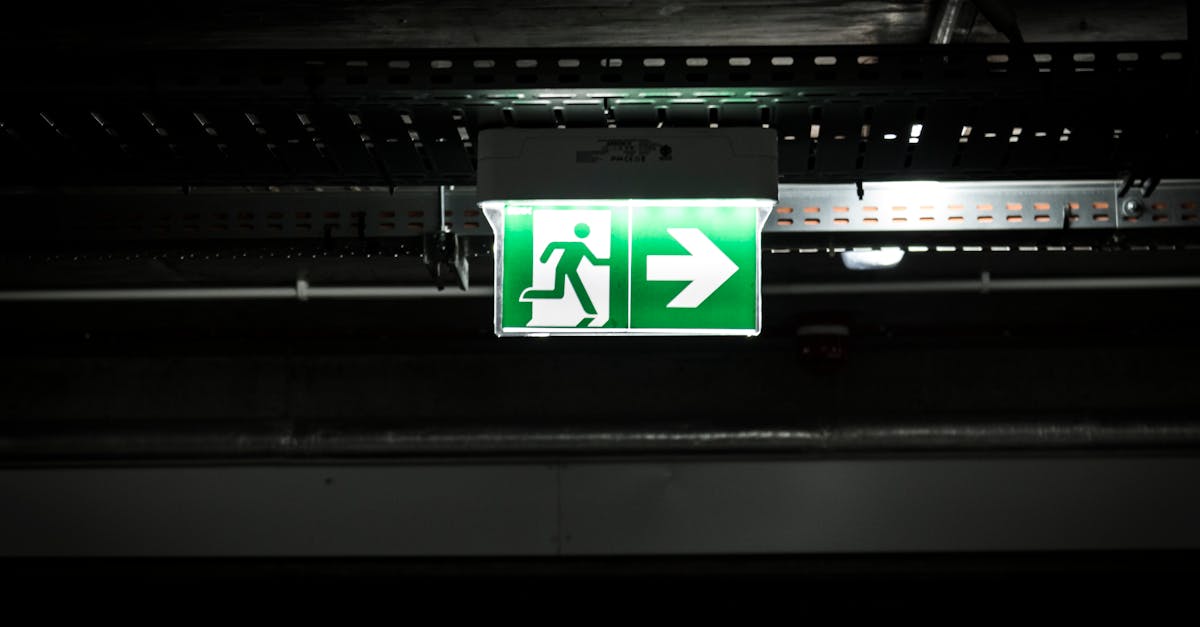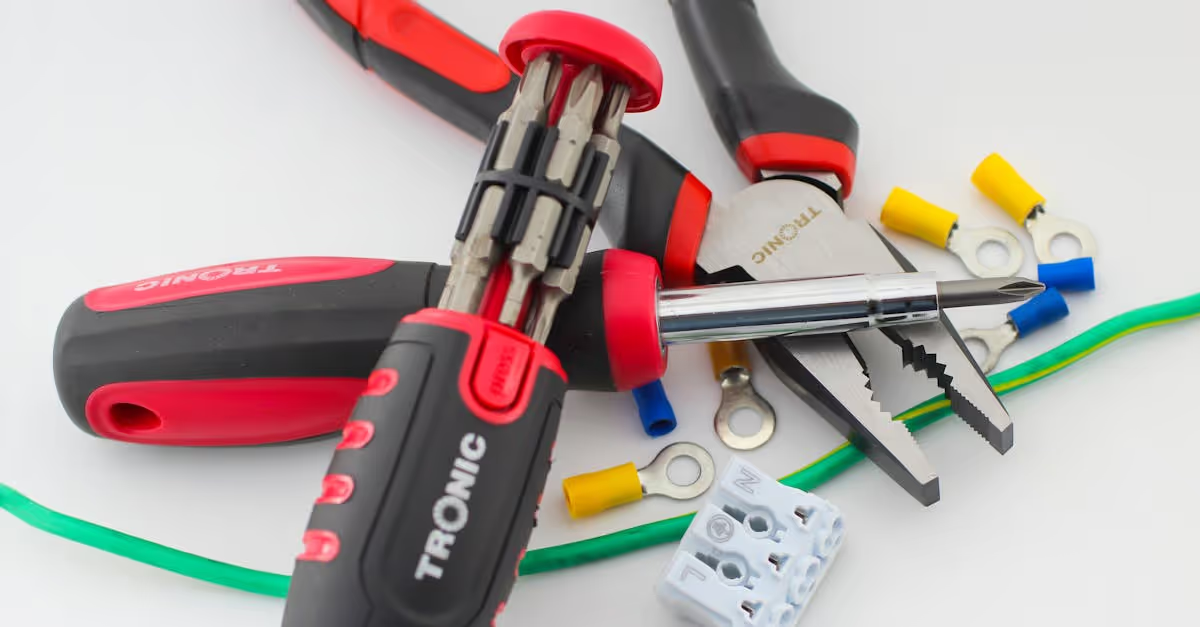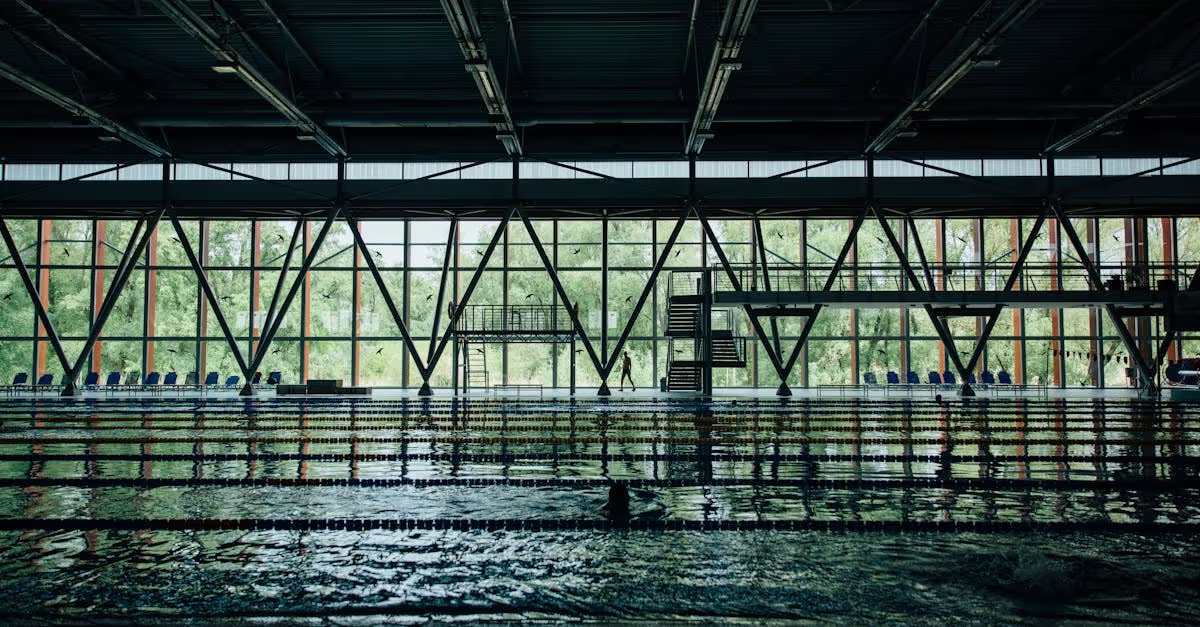Key Takeaways
- Importance of Safety Covers: Installing safety covers significantly reduces the risk of drowning, especially for children aged one to four, making pool safety a top priority.
- Types of Covers: There are primary types of pool safety covers—mesh and solid—each offering unique benefits such as debris prevention, UV blockage, and varying weights suited for different needs.
- Key Safety Features: Look for durability, ease of use, and child and pet safety features when selecting a cover. ASTM certification adds an extra layer of reassurance.
- Installation Best Practices: Proper installation is crucial for effectiveness. Use the right tools, follow a step-by-step approach, and consider hiring professionals for optimal results.
- Regular Maintenance: Routine maintenance, such as inspecting for damage, cleaning debris, and checking anchoring mechanisms, ensures the longevity and safety performance of safety covers.
- Seasonal Adjustments: Adapting maintenance practices according to seasonal changes is vital for maintaining the integrity of the pool cover and ensuring ongoing safety.
As summer approaches, we often think about pool parties and relaxation, but safety should always come first. Did you know that drowning is the leading cause of injury-related death for children ages one to four? Installing a safety cover for your pool can significantly reduce this risk.
In this guide, we’ll explore the different types of safety covers available and the essential features that make them effective. From mesh to solid covers, each option offers unique benefits to keep our loved ones safe while maintaining the pool's cleanliness. Let's dive into the world of pool safety and ensure our backyard oasis is a secure haven for everyone.
Overview of Pool Safety Covers
Pool safety covers play a crucial role in protecting our families and our pools. They act as barriers, preventing accidental falls while keeping our pools clean and debris-free. Two primary types of safety covers exist: mesh and solid. Each type has distinct advantages that cater to our pool safety needs.
Mesh Safety Covers
Mesh safety covers are constructed with permeable materials, allowing rain and melted snow to drain through. This design prevents water accumulation while keeping leaves and large debris out. Mesh covers are lighter and generally easier to install, making them an attractive option for many of us. They provide visibility into the pool, which can be comforting. However, they may require regular maintenance to ensure no debris builds up on top.
Solid Safety Covers
Solid safety covers offer a more robust barrier. They block sunlight, which helps prevent algae growth, making pool maintenance easier. Solid covers are usually heavier and can support more weight, enhancing safety for households with pets or children. Installation may involve additional anchoring, but the effort provides peace of mind. Solid covers also require manual removal of rainwater, but many of us find the benefits outweigh this small inconvenience.
Safety Features to Consider
When selecting a pool safety cover, certain features enhance overall safety. Look for covers with ASTM certification. This certification guarantees that the cover meets specific safety standards, providing reassurance. Other desirable features include easy access points for winterizing and cleaning, which make it simpler for us to maintain our pools.
We must also consider the securing mechanisms of each cover type. Are they reinforced? Proper anchoring prevents the cover from being easily dislodged by wind, ensuring a secure fit when the pool is not in use.
Installation Tips
Installation plays a vital role in ensuring pool safety covers function correctly. Professionals generally recommend hiring a service to handle this task. They possess the necessary skills and tools to install covers accurately. However, for the DIY enthusiasts among us, several resources and videos provide step-by-step guidance for installing covers safely.
In our quest for a safer pool area, we should also think about seasonal adjustments. Altering our installation method as seasons change may enhance safety. For example, a different installation technique might suit winter better, reducing potential hazards during extreme weather conditions.
Conclusion Avoided
Selecting and installing the right pool safety cover significantly bolsters our backyard safety. By understanding the differences between mesh and solid options, considering important safety features, and following installation best practices, we can protect our loved ones and enjoy swimming season without worry.
Types of Pool Safety Covers
Pool safety covers come in several varieties, each offering distinct benefits. Understanding these options helps us make informed decisions for enhanced pool safety.
Mesh Covers
Mesh safety covers utilize a woven fabric that allows water to drain while keeping debris out. Available in different weaves—90%, 95%, and 99% shade—these covers control sunlight and minimize dirt accumulation. Mesh covers are lightweight, easy to install, and can support hundreds of pounds. Installation involves stretching the cover over the pool, marking the deck for drilling, installing anchors, and attaching springs to keep it secure. Regular maintenance is essential, as leaves and other debris can accumulate on top. If we keep an eye on it, we can maintain both safety and cleanliness without much hassle.
Solid Covers
Solid covers offer a heavier-duty option, providing a more substantial barrier against environmental elements. These covers block sunlight, which prevents algae growth and conserves water. Solid covers support more weight, making them ideal for families with children or pets. Installation requires proper anchoring and securing the cover tightly over the pool. It’s crucial that we check for any damage before and after each season to ensure maximum effectiveness. With solid covers, we gain peace of mind, knowing our pool remains protected from accidents and debris buildup all winter long.
Automatic Covers
Automatic covers bring convenience to pool safety. These innovative covers can be opened or closed at the touch of a button, thanks to built-in mechanisms. They provide an efficient barrier against accidental falls and elements. Installation generally involves professional help, as they connect to the pool's existing mechanics. With proper maintenance, these covers function reliably, saving us time and effort in setup. Automatic covers also enhance our pool’s appeal, making our outdoor space feel integrated and user-friendly. Though more expensive, the investment pays off through safety and ease, allowing us to enjoy our pool with a little less worry.
Key Safety Features
Pool safety covers provide essential protection for families and pets, reducing risks and promoting cleanliness. Several key safety features significantly enhance their effectiveness.
Durability and Strength
Durability stands out as a crucial aspect of pool safety covers. Covers made from high-quality materials resist wear and tear from harsh weather and sun exposure. Mesh types allow water through but can withstand varying temperatures and conditions. Solid vinyl covers provide complete protection, as they don't just stop debris but also block sunlight. Strong materials contribute to longevity and safety, making sure these covers last through many seasons. They offer peace of mind, knowing they won’t fail under pressure, whether from curious kids or playful pets.
Ease of Use
Ease of use plays a vital role in ensuring safety. Automatic covers excel in this area, operating at the touch of a button, which takes the hassle out of opening and closing. Manual covers can also be simple with the right installation and routine checks for wear. We all know how tempting it is to skip a safety task when it feels too complicated. With intuitive designs, anyone can manage their pool cover regularly, maintaining an effective barrier. Can you imagine struggling with a heavy cover right before dive time? Choosing a cover that fits seamlessly into our lifestyles helps keep everyone safe without extra stress.
Child and Pet Safety
Child and pet safety represent the primary concern for many pool owners. Safety covers act as a sturdy barrier, preventing accidental falls. Many covers can support the weight of a child or a pet, which is a crucial feature for families. Safety covers not only keep pools clean but also protect our loved ones. We all remember a friend’s wild dog escaping and making a beeline for the pool, right? It’s essential to invest in a cover that provides true peace of mind. Features like robust anchoring systems and ASTM certification further guarantee that our little ones stay safe while enjoying the backyard.
Each of these features contributes to a safer swimming experience, making our pools enjoyable for the whole family.
Installation Process
Installing pool safety covers creates a barrier that protects loved ones and keeps our pools clean. Following the right steps ensures a smooth installation.
Tools and Materials Needed
Gathering the necessary tools and materials streamlines the installation process. We need:
- Safety cover: Select the type based on our pool's size and shape.
- Drill: For creating anchor points.
- Anchors: Stainless steel anchors work best for durability.
- Spring straps: These secure the cover to the anchors.
- Measuring tape: Helps ensure accurate measurements.
- Level: Ensures the cover sits evenly.
- Concrete mix (if needed): For setting anchors into concrete.
Having these items at hand will make our installation efficient and effective.
Step-by-Step Installation Guide
- Measure the Pool: Measure the pool’s dimensions accurately to guide cover selection. Post careful measurements, we can confidently choose the right cover.
- Mark Anchor Points: Use the measuring tape to designate anchor points around the pool's edge. Align these points with the cover's strap system.
- Drill Holes: Use a drill at the marked spots. If installing in concrete, drill deep enough to secure anchors firmly.
- Insert Anchors: Place the anchors into the drilled holes. If concrete's involved, mix and pour concrete to secure the anchors in place, allowing time for drying.
- Attach Spring Straps: Once the anchors are set, attach the spring straps from the cover to the anchors. Ensure the cover fits snugly against the pool.
- Test the Cover: Walk around the cover to check stability and security. Jumping on the cover might feel like we’re testing our childhood trampoline skills—just remember it’s not a bouncy castle!
Maintenance and Care
Maintenance of pool safety covers guarantees their effectiveness and longevity. Regular care keeps the pool area safe and clean.
Common Maintenance Tasks
- Inspect for Damage: We check for tears, worn areas, or any signs of wear every month. Noticing these issues early prevents bigger problems later.
- Clean the Cover: We remove debris from the cover using a soft broom or blower. Proper care protects the cover's material and keeps our pools free from contaminants.
- Check Anchoring Mechanisms: We verify the strength of anchors and springs. Ensuring they’re secure provides stability while the cover is in use.
- Assess Water Accumulation: We monitor for any pooled water on solid covers. Using a cover pump or mesh panel helps remove excess water, maintaining the cover's integrity.
- Store Properly: We store covers in a clean, dry area during the off-season. This practice extends their lifespan and performance when we need them again.
Seasonal Adjustments
During seasonal changes, we adjust our cover maintenance approach. In winter, for instance, we ensure that snow and ice are removed promptly to prevent excess weight. In warmer months, we focus on keeping the cover clean from leaves and pollen.
Safety Features
Regular maintenance highlights safety features in various covers. Mesh covers allow some water to drain while preventing larger debris from entering the pool. Solid covers block UV rays, reducing algae growth. Automatic covers add convenience, allowing us to operate them easily while promoting safety.
Useful Tools
We can utilize several tools for maintenance:
- Cover Pump: Helpful for removing standing water off solid covers.
- Soft Broom: Ideal for clearing leaves and debris gently.
- Maintenance Kit: A kit might include cleaner and protective treatments specific for the cover's material.
Taking care of our pool safety covers involves routine inspections and seasonal adjustments. By incorporating these practices, we uphold a safe environment for our families while preserving the integrity of our covers.
Conclusion
Installing a safety cover for our pool is a proactive step we can take to protect our loved ones and enhance our backyard experience. By choosing the right type of cover—whether it's mesh, solid, or automatic—we can ensure safety while keeping our pool area clean and inviting.
Regular maintenance and proper installation are key to maximizing the effectiveness of these covers. With the right care, we can enjoy peace of mind knowing our pool is secure. Let’s prioritize safety and make informed choices that allow us to enjoy our pools worry-free this summer.
Frequently Asked Questions
What is the importance of pool safety covers?
Pool safety covers are essential for preventing accidental drownings, particularly in homes with young children. They act as barriers, keeping kids safe and the pool clean by blocking debris and sunlight that can promote algae growth.
What types of pool safety covers are available?
There are three main types of pool safety covers: mesh, solid, and automatic. Mesh covers are lightweight and allow water drainage, solid covers provide a sturdy barrier against sunlight and support weight, while automatic covers offer convenience and ease of use.
How do I install a pool safety cover?
To install a pool safety cover, you'll need tools like drills, anchors, and spring straps. The steps include measuring the pool, marking anchor points, drilling holes, inserting anchors, and attaching the cover. Regular checks ensure stability and effectiveness.
What maintenance do pool safety covers require?
Regular maintenance includes inspecting for damage, cleaning the cover, checking anchoring mechanisms, and removing debris. Seasonal adjustments, like clearing snow in winter, enhance the cover's longevity and effectiveness while ensuring safety.
Are automatic pool safety covers worth the investment?
Yes, automatic pool safety covers are worth the investment as they provide convenience, ease of use, and enhanced safety. Though initially more expensive, they simplify management and offer efficient barriers against accidents and environmental elements.
What features should I consider when choosing a pool safety cover?
When selecting a pool safety cover, consider durability, ASTM certification for safety standards, ease of use, and secure anchoring mechanisms. A robust cover guarantees safety for children and pets while maintaining pool cleanliness.
Can I install a pool safety cover myself?
While it's recommended to hire professionals for optimal installation, DIY resources are available for those who prefer to tackle the job themselves. Following step-by-step guides helps ensure your cover is installed correctly.
How does a mesh safety cover work?
A mesh safety cover allows rain and melted snow to drain through while keeping debris and sunlight out, which helps minimize dirt accumulation. Regular maintenance is essential to ensure its effectiveness.






